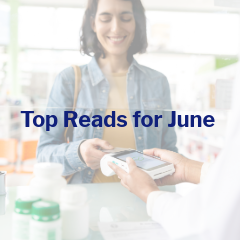
The top three Prescribed Perspectives articles downloaded by health systems in June.
An overview of patient assistance programs and their importance.
By
Date
January 21, 2022

Author: Tiffany Crawford
Read time: 2 minutes
A simple plan
Patient assistance programs, which are sponsored by pharmaceutical companies, allow patients to receive medication and medical devices that they otherwise could not afford. PAPs in their current form originated to help patients and hospitals cope with rising drug prices.
The concept was fairly simple: give free or reduced-cost brand name medication to patients who cannot pay for it. Drug-specific eligibility criteria vary among patient assistance programs, but the primary factor has been the patient’s income relative to the federal poverty line, size of family and other income influences.
Not so simple anymore
Changes in the healthcare and insurance industries have complicated the affordability factor. A roller-coaster economy, increased drug prices, a growing market for costly specialty and orphan drugs, increasing complexity in multi-drug treatment regimens and a trend toward higher out-of-pocket costs make eligibility formulas difficult to master.
In addition, the Affordable Care Act (ACA) is in flux. Initially, the ACA reduced the number of uninsured Americans (with varying levels of prescription coverage) by requiring U.S. residents to enroll in the program or face a penalty. But benefit coverage is far from consistent. Low-cost plans come with high deductibles, caps and insufficient coverage for catastrophic illness. Drug coverage is adequate only if prescribed medication is in the formulary. PAPs continue to be an important resource for supporting uninsured and underinsured patients as well as individuals who need costly specialty drugs, with the burden for determining eligibility and informing patients falling to providers.
The best reason to participate
Pharmaceutical companies offer these patient-centric programs to help patients overcome financial obstacles, improve adherence and increase adherence. Early adoption of drug therapy often depends on accessibility, particularly in the early stages when the medication is not a part of insurance formularies. On the other hand, pharma companies are subject to scrutiny that compels them to maintain tight control on patient qualifications, with extensive documentation to support enrollment and track usage.
For hospitals and health systems, the reason to navigate the rules and changes is that it directly affects their bottom line. Industry sources report that providers offering patient assistance programs have recouped 2-3% of their annual drug spend, which can be millions of dollars for large organizations. Hospitals that help patients participate in programs that reduce financial toxicity may also see increases in overall patient satisfaction. The challenge is how to keep up with PAP requirements without straining staff time and resources.